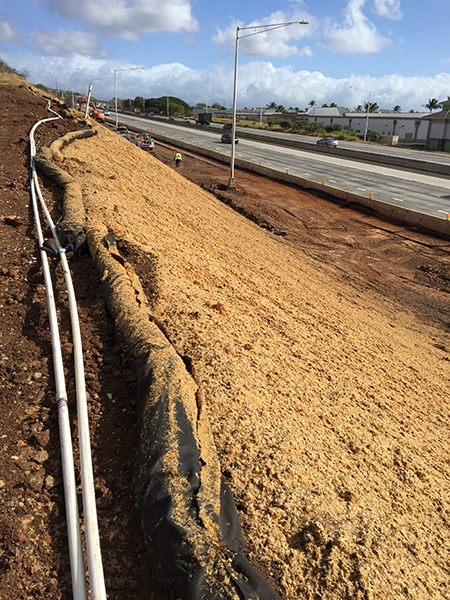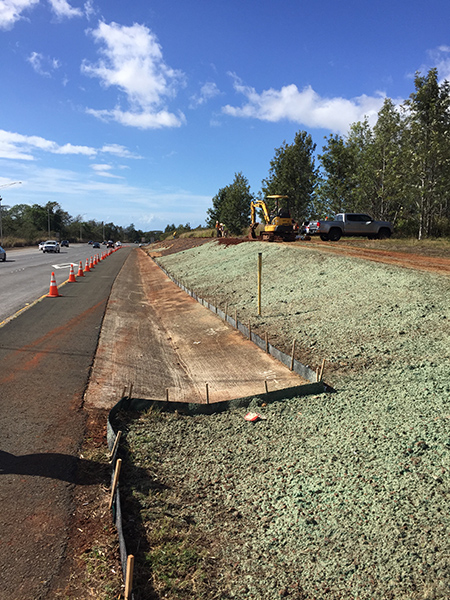Do you have exposed soils on your construction project that need to be protected from water and wind erosion?
During construction, ground disturbing activities often result in areas of exposed soils susceptible to erosion. If a prolonged period of time is expected where construction activity will cease or construction activities are complete, stabilizing disturbed areas is needed.
Mulching is a best management practice (BMP) that can provide either temporary or permanent stabilization to prevent erosion and reduce runoff. Applying mulch using green material, hydraulic matrices or hydraulic mulches provides temporary ground cover until permanent vegetation is established.


Consider the following when applying mulch to exposed soil to increase the erosion control effectiveness:
- Mix mulch as specified by manufacturer or as recommended by a licensed landscape architect.
- Determine the adequate application rate based on manufacturer recommendations.
- Add a tackifier to the mulch mixture.
- Apply grass seed to the mulch mixture.
- Avoid application of mulch immediately before, during, or after a rainfall event.


Inspection and maintenance of areas that have been mulched requires inspections after the drying period and then regular inspections to ensure adequate cover is maintained until permanent vegetation is established. If erosion has occurred, additional mulch may be required.
Minimizing the amount of soil exposed to wind and rain by implementing BMPs such as mulching, can prevent erosion and provide both temporary and permanent stabilization on a construction project. Soil disturbance is a part of construction, but preventing erosion and minimizing pollutants discharged from a site is also a part of construction.

